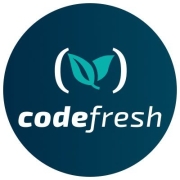Build Automation optimizes software development by automating repetitive tasks, reducing manual effort, and ensuring consistent environments across projects.
This solution accelerates software delivery by automating tasks like compiling code, running tests, and deploying applications. It helps teams maintain quality and reduce errors through consistent processes and integration with other tools for continuous integration and deployment. The automation approach supports developers by streamlining workflows, enhancing collaboration, and ensuring applications are delivered on schedule. Feedback from peers highlights significant time savings and improved efficiency, which translate into faster project completion and higher quality releases.
What are the critical features of Build Automation?In industries such as finance, healthcare, and retail, Build Automation ensures software updates are rapidly deployed without compromising quality. Organizations see value by integrating automation in legacy systems, which helps maintain market competitiveness.
For organizations, automating the build process simplifies complex tasks and ensures that the final product is reliable and up-to-date. This streamlining is particularly beneficial for teams aiming to increase productivity while remaining agile in fast-paced markets.
| Product | Market Share (%) |
|---|---|
| GitLab | 12.2% |
| GitHub Actions | 10.0% |
| Tekton | 9.6% |
| Other | 68.2% |


















































Build Automation streamlines the software development process by reducing manual errors, speeding up the build process, and ensuring consistency across builds. By automating repetitive tasks, you can focus more on coding and less on manual compilation and deployment. This leads to quicker iterations and a more reliable product delivery.
What features should you look for in a Build Automation tool?When selecting a Build Automation tool, consider its compatibility with your existing technology stack, ease of integration with CI/CD pipelines, support for various programming languages, and ability to handle parallel execution. A good tool should also provide detailed logging and error reporting, along with a user-friendly interface to minimize the learning curve.
Why is Build Automation essential for continuous delivery?Build Automation is crucial for continuous delivery as it ensures quick and consistent application deployment. By automating the build process, you can frequently release smaller, incremental updates, which reduces the risk associated with large, less frequent releases. This ability to quickly roll out updates ensures your product continually meets user needs and stays competitive.
What are common challenges faced in Build Automation?Common challenges include managing complex build scripts, ensuring cross-environment consistency, and handling dependencies. As projects grow, so does the complexity of the automation setup, making it vital to maintain a well-documented and modular configuration. Addressing these challenges typically involves using robust tools and best practices to simplify the build process.
How does Build Automation enhance collaboration among development teams?Build Automation enhances collaboration by providing a standard workflow that all team members can follow. This standardization reduces misunderstandings and errors, ensuring that everyone is working with the same codebases and configurations. By facilitating continuous integration, teams can more easily track progress, share updates, and resolve conflicts, leading to smoother and more efficient project development.